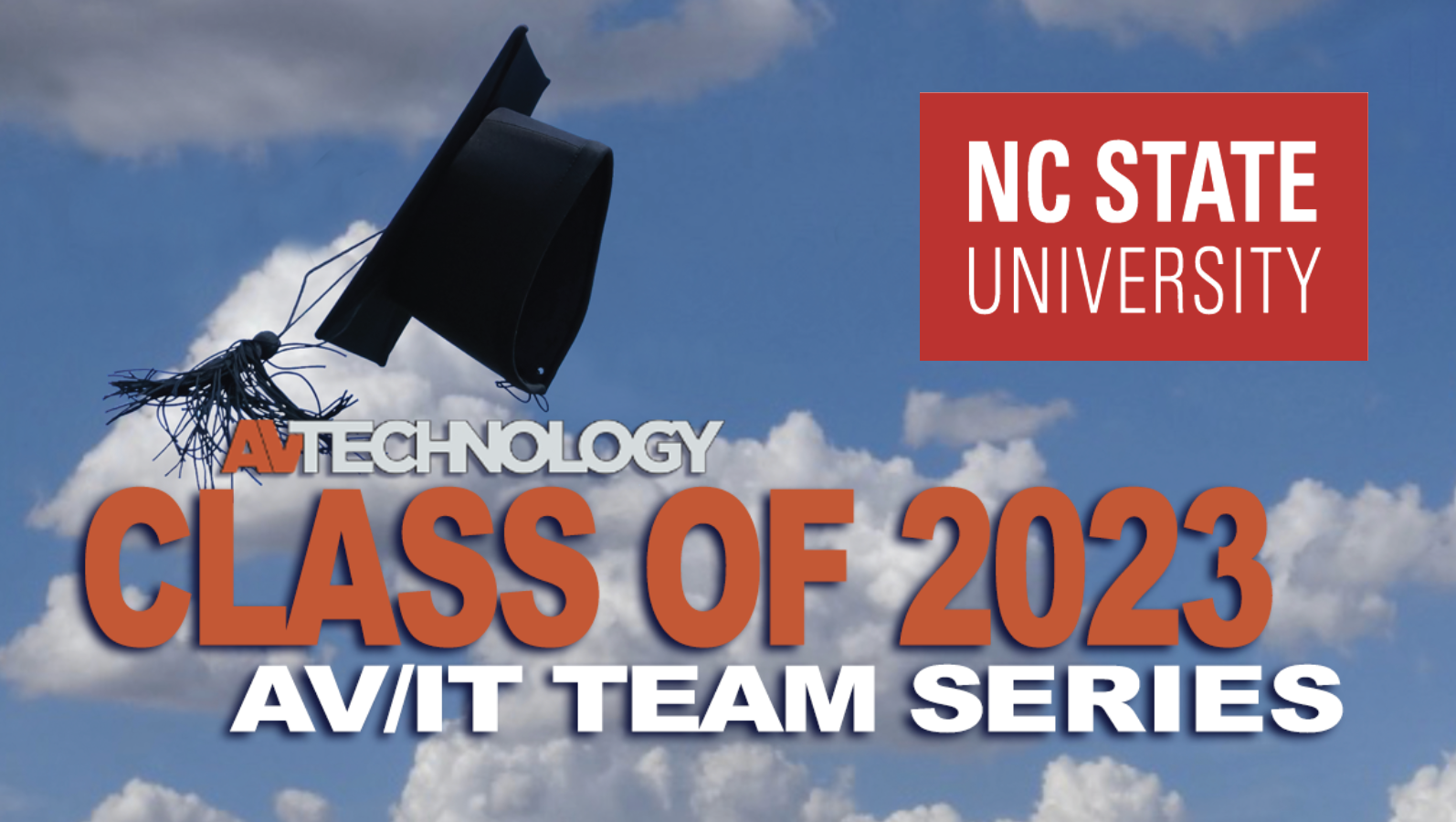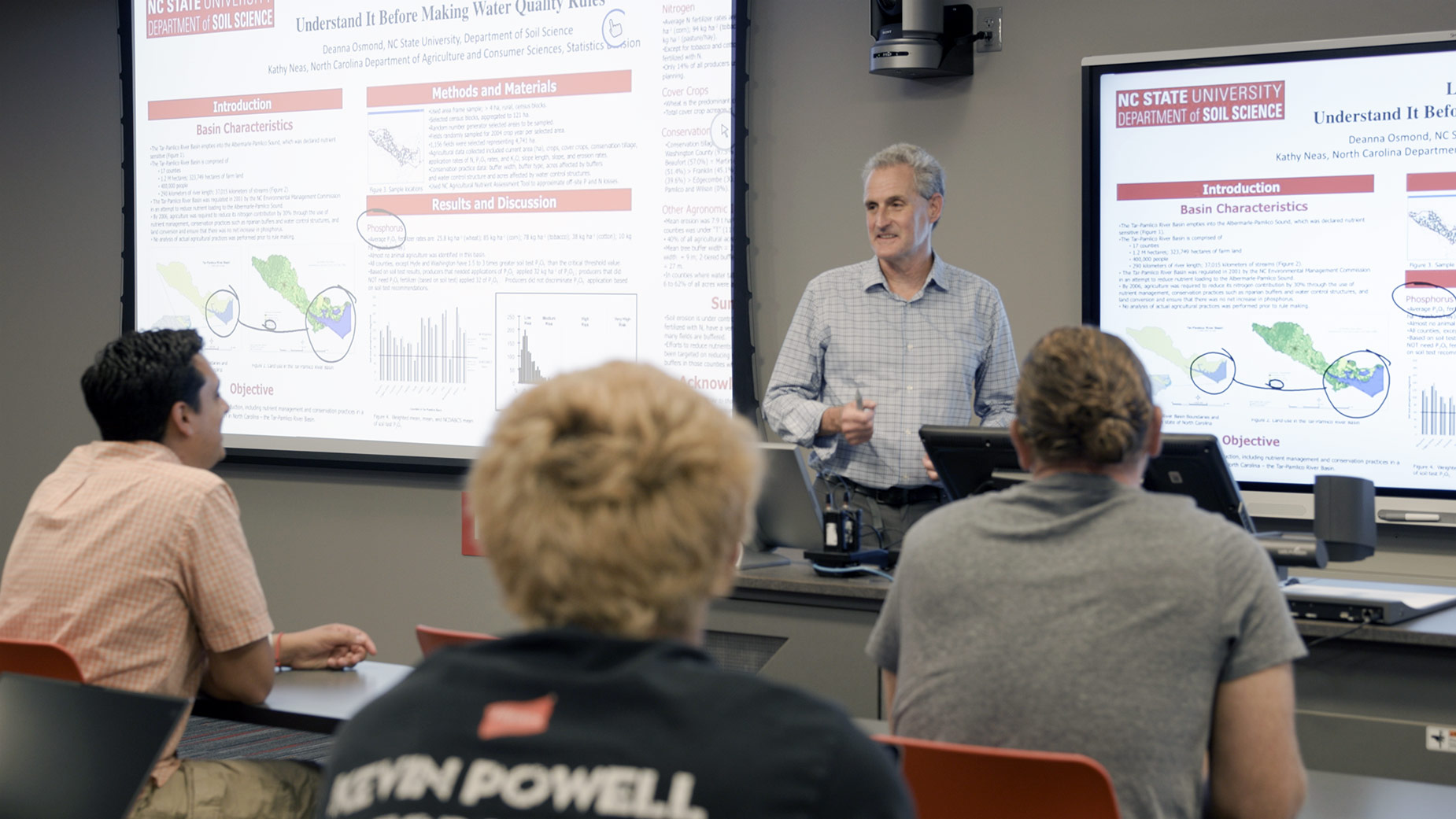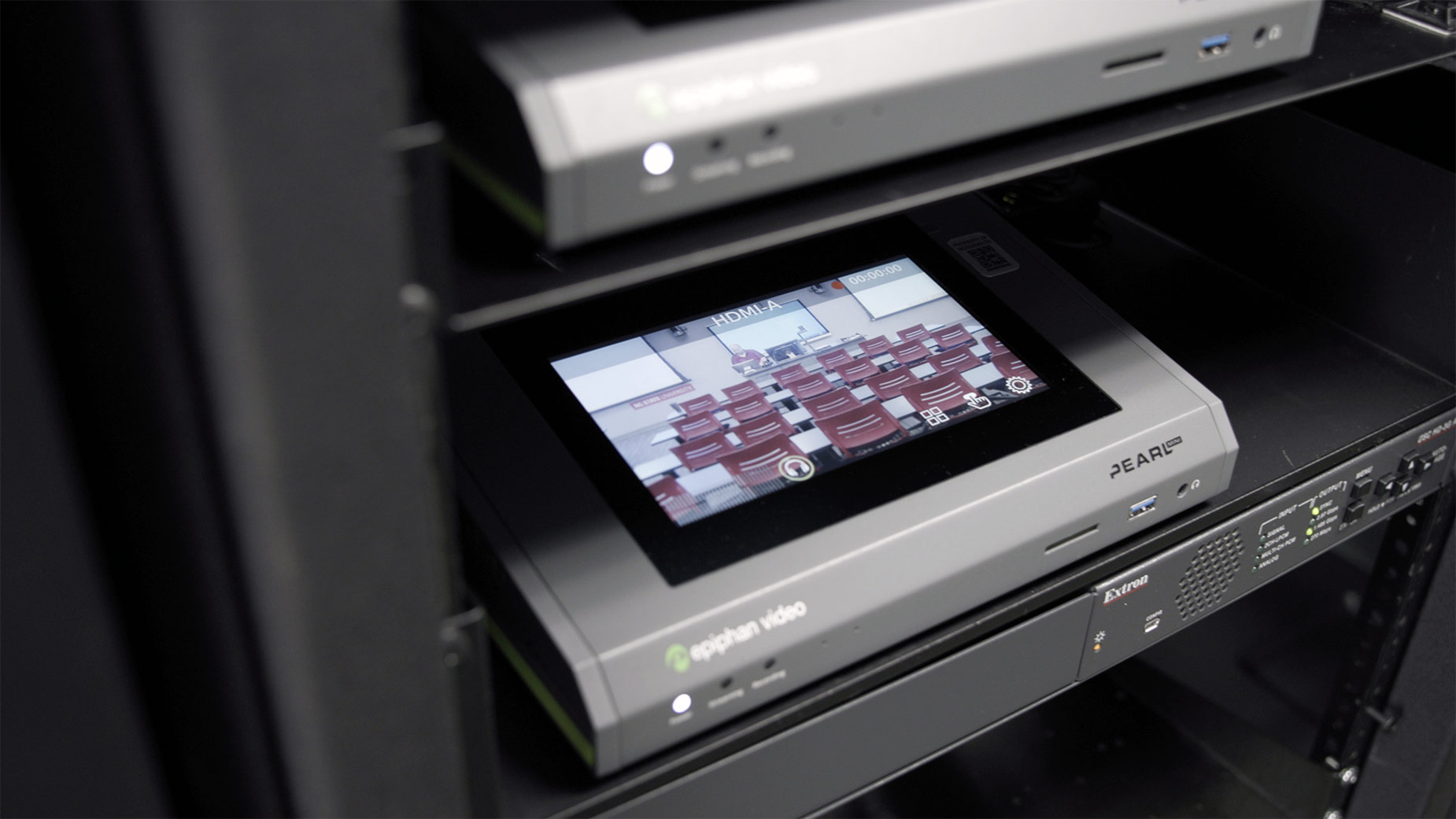The Class of 2023: North Carolina State University
Students and faculty members who participated in year-end surveys expressed an overwhelming desire to increase classroom capture.


AV/IT TEAM: Tony Pearson, senior associate director of Digital Education and Learning Technology Applications (DELTA); Leisa Bolles, director of Media Production Services (DELTA); Ron Bradley, classroom technology manager
GOALS: The existing lecture capture technology at North Carolina State University (NC State) was primarily geared towards accommodating any student unable to attend classes physically. Therefore, the scope of the university’s lecture capture initiative was relatively small, with only 50 classrooms capable of streaming and recording. And it was at the professor’s discretion whether or not to opt-in to have their classrooms recorded.
Year after year, however, when students submitted feedback and completed surveys, the demand for more recorded courses was consistently growing. Both in-person and online students saw it as a valuable addition to their learning experience. Even faculty members who participated in year-end surveys expressed an overwhelming desire to increase classroom capture, believing it could have a positive impact on student performance.

CHALLENGES: With a growing demand to provide more class recordings from in-class students, online students, and faculty members, NC State’s Digital Education and Learning Technology Applications (DELTA) team went through an exhaustive evaluation period to find the solution that made the most sense. Whatever they chose as their classroom capture solution, it had to: integrate with their existing AV infrastructure and content management system (CMS), Panopto; have the option to be operated remotely; be easy to maintain without adding additional headcount; and had to make sense from a budgetary perspective. The only product that checked all boxes? Epiphan Pearl systems.
Epiphan Video Pearl Mini
FINAL INSTALL/USER BENEFITS: NC State chose Pearl Mini hardware encoders as the primary workhorse for all lecture capture setups. With its two HDMI, one SDI, and dual professional XLR audio inputs, it was the perfect choice for in-room audio and video capture. Each room included a camera source, a computer source, and audio from a ceiling-mounted microphone. Right off the bat, NC State’s DELTA staff were intrigued by Pearl’s ability to integrate with all the existing and new equipment seamlessly.
“You can plug a Pearl Mini into your AV infrastructure and expect it to work. It just works. Once you’ve configured it and had a setup on the network, it just works flawlessly,” said Ron Bradley, Classroom Technology manager. Upon realizing that Pearl Mini would interact with the other components, DELTA had to evaluate it from the end-user experience. The team’s idea of an ideal end-user experience was for it to be totally seamless. They didn’t want the faculty to feel intimidated or overwhelmed by the technology; they didn’t even want faculty members to notice it was there.
The integration with Panopto CMS delivered that seamless experience. It eliminated the need to show professors how to activate the Pearl Mini in their lecture halls. The faculty, already familiar with Panopto, pressed record just like they always did. And to accommodate any professors not yet familiar with Panopto, the DELTA team developed automated control functions through Pearl’s compatibility with the Crestron Control Module. Professors could now walk into the lecture hall and begin teaching. The recording starts automatically, and the file is uploaded to NC State’s LMS minutes after the lecture concludes.
A daily selection of features, industry news, and analysis for tech managers. Sign up below.
With two key criteria met, the question of maintenance and monitoring still loomed large—after all, the DELTA team couldn’t be in 300 different places at once. Fortunately, those apprehensions about being spread too thin were relieved by the inclusion of Epiphan Cloud, included with all Epiphan Pearl products. They could configure and monitor over 300 Pearl devices on campus from a centralized admin panel on their web browser. Epiphan Cloud eliminated any need for legwork, making the scaled-up classroom capture more efficient to maintain than the previous iteration.
[ Check out more from The Class of 2023: The AV/IT Teams of Higher Ed ]

Cindy Davis is the brand and content director of AV Technology (AVT). She was a critical member of the AVT editorial team when the title won the “Best Media Brand” laurel in the 2018 SIIA Jesse H. Neal Awards. Davis moderates several monthly AV/IT roundtables and enjoys facilitating and engaging in deeper conversations about the complex topics shaping the ever-evolving AV/IT industry. She explores the ethos of collaboration, hybrid workplaces, experiential spaces, and artificial intelligence to share with readers. Previously, she developed the TechDecisions brand of content sites for EH Publishing, named one of the “10 Great Business Media Websites” by B2B Media Business magazine. For more than 25 years, Davis has developed and delivered multiplatform content for AV/IT B2B and consumer electronics B2C publications, associations, and companies. A lifelong New Englander, Davis makes time for coastal hikes with her husband, Gary, and their Vizsla rescue, Dixie, sailing on one of Gloucester’s great schooners and sampling local IPAs. Connect with her on LinkedIn.
